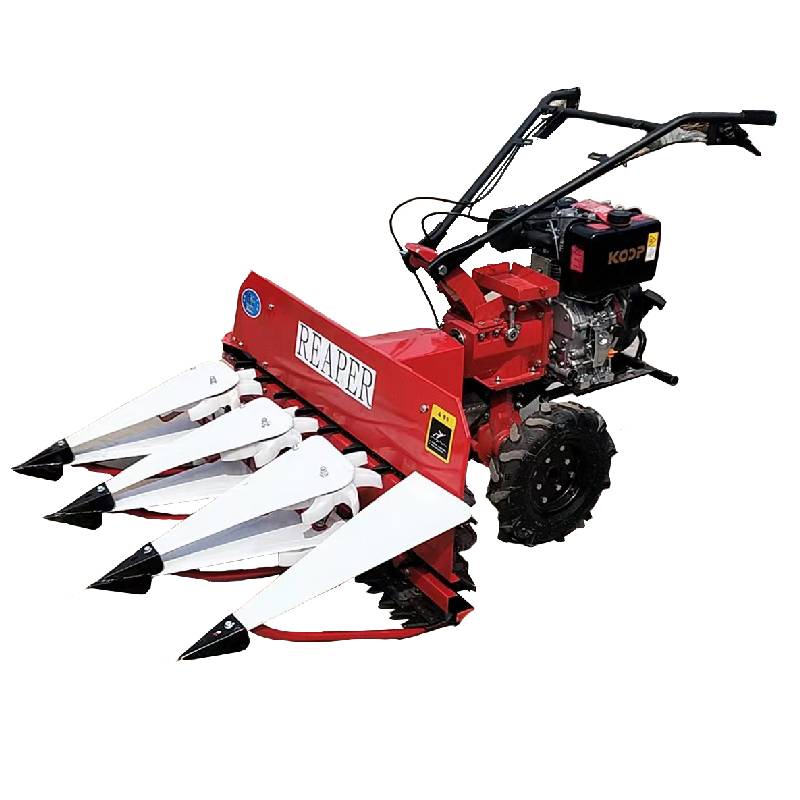Reaperbinder with Auto-Tie & 4-Wheel Power—Why Buy?
Mini tiller mounted reaper head: a nimble reaperbinder for small plots
From Julu Industrial Park, Xingtai City, Hebei Province, China, the Mini tiller mounted reaper head (Microcultivator cutter head GW100C2i) has been getting a lot of chatter in dealer WhatsApp groups I lurk in. To be honest, it’s the kind of quiet innovation smallholders actually use: a compact cutter head that turns a mini tiller into a field-ready reaperbinder for rice, wheat, barley, or forage. Not every farm needs a 4-row combine; plenty need a precise, affordable attachment that simply works.
Why the market is moving smaller
Two trends are hard to ignore: narrower plot sizes and tighter labor windows. In fact, FAO has repeatedly flagged the need for right-sized mechanization in Asia and Africa. It seems that farmers want lower fuel burn, simpler maintenance, and decent cutting quality over bells and whistles. A compact reaperbinder checks those boxes—and doesn’t blow the capex budget.

Technical overview: GW100C2i
This reaper head couples to common mini tillers (belt or spline drive kits available). The manufacturer uses high-manganese steel blades, CNC-ground and oil-quenched, then tempered for edge stability. Drive guards and a simple slip clutch protect the gearbox when you find that inevitable hidden stone.
| Spec | GW100C2i (≈ values) |
|---|---|
| Cutting width | ≈ 100 cm |
| Recommended power | ≥ 5.5–7.5 hp mini tiller |
| Blade material | High-Mn/65Mn steel, tempered (HRC 45–55) |
| Typical capacity | 0.2–0.4 ha/hour (field-dependent) |
| Weight | ≈ 28–32 kg |
| Noise | ≈ 78–82 dB(A) at operator ear (real-world may vary) |
Process flow, testing, and service life
- Materials and methods: laser-cut frames, MIG-welded seams, CNC-ground blades, oil quench + temper, zinc-based anti-corrosion coat.
- Testing standards: blade hardness per ISO 6508-1 (Rockwell); dynamic balance to ≈ G6.3 per ISO 21940; machinery safety aligned with ISO 4254-1; CE conformity to 2006/42/EC.
- Factory QC: 100% no-load run-in (20–30 min), vibration check, torque test on guards, and random salt-spray test on coated parts (24–48 h).
- Service life: blades ≈ 600–800 hours in cereal crops; gearbox seals ≈ 3–5 seasons with normal maintenance.
- Industries: smallholder grain, seed plots, research stations, hillside terraces, orchards inter-row forage.
Applications and advantages
In paddy rice and dryland wheat, operators report cleaner stubble and fewer lodged losses compared with improvised cutters. The big wins are maneuverability and low fuel use. Surprisingly, the reaperbinder format also shines in trial plots where consistency matters more than speed.
Vendor snapshot (what buyers compare)
| Vendor/Model | Cut Width | Approx. Price | Certs | Lead Time |
|---|---|---|---|---|
| Niuboshi GW100C2i | ≈ 100 cm | Mid-range | CE, ISO 9001 | 10–20 days |
| Local Fabricator A | 80–90 cm | Low | Basic QC only | 7–14 days |
| Import Brand B | 100–120 cm | High | CE, ISO, extra safety | 30–45 days |
Customization
- Interfaces: spline/belt kits for common mini tillers.
- Blade options: serrated vs. smooth; anti-wrap guards for strawy crops.
- Branding: paint color, decals, and carton spec for distributors.
Field notes and feedback
“Saved two laborers per hectare,” a Hunan rice grower told me—anecdotal, sure, but echoed elsewhere. A seed-company tech in Punjab reported stubble height variation under 10 mm across plot lines. My own take: if you want a tidy, fuel-thrifty reaperbinder attachment, this is hard to argue with.
Citations
- FAO. Sustainable Agricultural Mechanization Strategy: Asia and the Pacific, 2022.
- ISO 4254-1: Agricultural machinery – Safety – Part 1: General requirements.
- ISO 6508-1: Metallic materials – Rockwell hardness test.
- ISO 21940: Mechanical vibration – Rotor balancing.
- EU Machinery Directive 2006/42/EC – CE Conformity.
Latest news
-
Mini Combine Harvester for Paddy – Compact, Efficient Rice Harvesting SolutionsNewsNov.24,2025
-
Mini Chain Harvester: Compact Forestry Solutions for Sustainable LoggingNewsNov.23,2025
-
Kartar Mini Harvester – Compact, Efficient Harvesting Machinery for Small FarmsNewsNov.23,2025
-
Compact Power: Elevate Your Farming with Harvesting Machine SmallNewsNov.22,2025
-
Discover the Power and Potential of Harvester Mini Combine Machines | Efficient Small-Scale HarvestingNewsNov.22,2025
-
Compact Harvester Machines: Small-Scale Agriculture’s Big AdvantageNewsNov.21,2025








